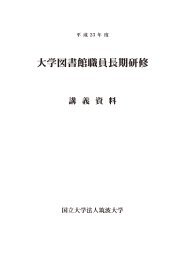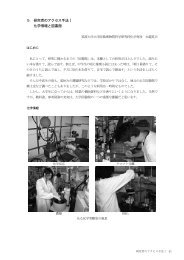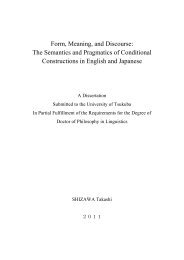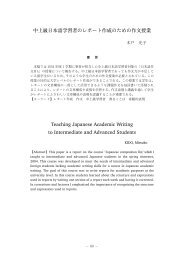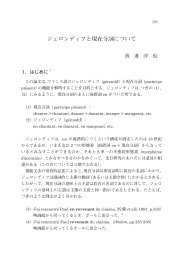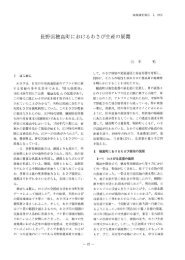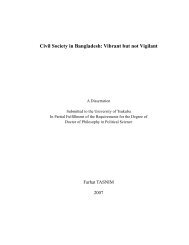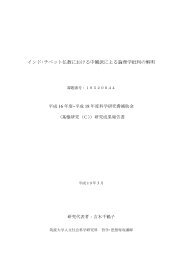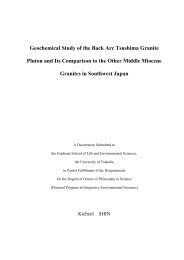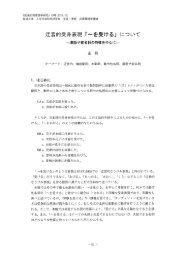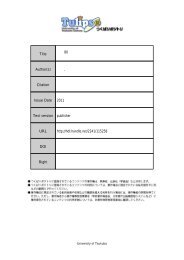Gamma Rays and CarbonIon-Beams Irradiation for Mutation ...
Gamma Rays and CarbonIon-Beams Irradiation for Mutation ...
Gamma Rays and CarbonIon-Beams Irradiation for Mutation ...
Create successful ePaper yourself
Turn your PDF publications into a flip-book with our unique Google optimized e-Paper software.
Summary<br />
Both <strong>Gamma</strong> rays <strong>and</strong> Carbon ion-beams irradiation methods were<br />
applied in order to identify the critical irradiation doses, to induce genetic<br />
variability <strong>for</strong> mutant selection <strong>and</strong> to evaluate the response of black Sigatoka<br />
disease. Both irradiation methods acted different in terms of biological effect<br />
when banana explants were exposed. <strong>Gamma</strong> rays <strong>and</strong> Carbon ion-beams<br />
produced the same tendency of survival rate, meaning that increasing dosage<br />
also increased mortality, but both methods were different in terms of linear<br />
energy transfer. ‘FHIA-01’ tolerated high doses of <strong>Gamma</strong> rays, but was<br />
susceptible to the high doses of Carbon ion-beams. The <strong>Gamma</strong> rays results<br />
suggested that ‘FHIA-01’ can be explored using other dose intervals among<br />
150 Gy <strong>and</strong> 500 Gy. Weight <strong>and</strong> height of plantlets were affected by <strong>Gamma</strong><br />
rays <strong>and</strong> Carbon ion-beams. <strong>Gamma</strong> rays reduced drastically these characters<br />
when doses of 200-300 Gy were applied. Carbon ion-beams also affected the<br />
height <strong>and</strong> weight with the doses between 4 <strong>and</strong>16 Gy. LD50 of both cultivars<br />
‘FHIA-01’ <strong>and</strong> ‘Orito’ manifested high sensitivity to both <strong>Gamma</strong> rays <strong>and</strong><br />
Carbon ion-beams, although in each irradiation method the Gy energy were<br />
different.<br />
During the second Carbon ion beam irradiation the explants<br />
behaved different. Weight <strong>and</strong> height remained stable up to 8 Gy <strong>and</strong> the<br />
survival rate was reduced much more between 8 to 16 Gy.<br />
The relative DNA content of ‘FHIA-01’ was reduced by <strong>Gamma</strong><br />
rays at 200 <strong>and</strong> 300 Gy, suggesting DNA deletion. ‘FHIA-01’ is definitely a<br />
promising cultivar with high sensitivity response to Gy exposure with a high<br />
chance of improving its quality by mutation induction. Sigmoid drooping leaf,<br />
a putative mutation of ‘FHIA-01’ was generated. As first <strong>and</strong> second<br />
132



